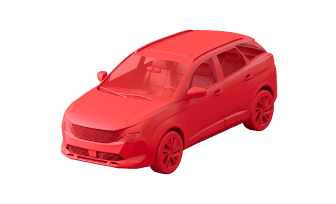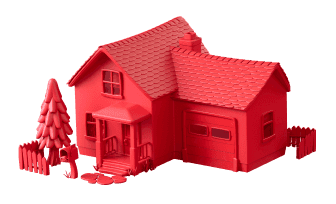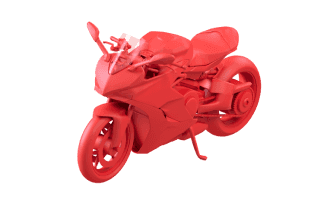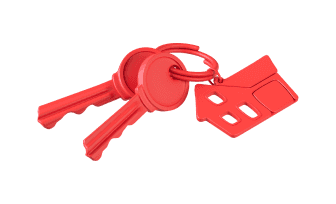Glossary
Here's a handy list of definitions for many of the terms we use, written in plain and simple language.
Auto insurance
A
Accident benefit
If you are injured in a car accident, you may receive accident benefits; if you are killed in a car accident, your beneficiary will receive them. Accident benefits are paid regardless of who is at fault in an accident. Certain exclusions may apply. Check your policy for details.
Accidents or claims
This includes all accidents, whether the driver was at fault or not, even if an insurance claim was not made, and any windshield or glass claims.
Additional drivers
Any other licensed drivers with permission to operate your vehicle(s), even if they won't be driving your vehicle(s) regularly and even if they are not directly related to you.
Adjuster
A licensed person employed by your insurer to evaluate the merits of your claim and make recommendations regarding settlement.
Age
For insurance purposes, your age means the full number of years since birth at the start of insurance coverage.
All perils
This is a combination of collision or upset and comprehensive coverage. It gives you the broadest optional loss or damage coverage available. You must select a deductible when you choose this option.
Anti-theft device discount
You may be eligible for a discount if your vehicle is equipped with an after-market (not factory-installed) anti-theft device that is wired to the ignition. You must provide written proof that the system was professionally installed.
At-fault accident
If you are involved in a car accident and your car is damaged, your insurance company is required, by law, to assign the percentage of fault to each of the drivers involved in the accident. If you are in an accident and you are the only car involved, your insurance company will most likely consider it an "at fault" accident (100% at fault). It is possible to be in an accident and be considered "not at fault" (0% at fault) or even "partially at fault" (50% at fault).
Fault is determined using the fault determination rules set out by your province and all insurance companies have to use the same rules. They are designed to help insurance companies deal with accident claims quickly and economically.
B
Bodily injury
This is part of your basic auto insurance "liability" coverage. It covers you for things like legal fees and the cost of settling a claim if you cause an accident with your vehicle, and someone sues you for injuries or death. You must choose a "limit" for this coverage. This limit determines the maximum amount that will be paid out.
C
Cancellation
The termination of an insurance contract by either you or your insurer in accordance with the contract provisions and provincial laws.
Certificate of insurance
A document listing your coverages. The document includes the name of the insurer, the policy period and the limitations of coverage.
Claim
Your notification to your insurer for reimbursement due to a loss from an insured peril.
Class of licence
Your class of licence can be found on your driver's licence. Classifications are different for each province. For more information, see the useful auto insurance links page for a list of provincial licensing websites.
Comprehensive
This optional coverage gives you the same protection as specified perils (fire, theft or lightning), and also protects you against vandalism, falling or flying objects, and more. You must select a deductible when you choose this option.
Continuous auto insurance coverage
The period of time that you have had uninterrupted auto insurance.
Convictions, major
Major convictions are the following offences under any act governing highway traffic:
failing to report an accident,
failing, in the event of an accident, to give your name and driver's licence number to police or anyone else entitled to that informationConvictions, minor
Minor convictions include the following:
backing up - unsafe/illegal/improper - any type,
brakes - none/inadequate/improper - any type,
crowding driver's seat,
door opening - illegal/obstructing traffic - any typeConvictions, serious
Serious convictions, or Criminal Code convictions, include the following:
criminal negligence committed in the operation of a motor vehicle,
manslaughter committed in the operation or use of a motor vehicle,
driving while your licence is under suspensionCustomized or modified, vehicle
Your vehicle is considered to be customized or modified if it has been changed in any way from its original condition in order to improve or alter its performance, appearance or value.
D
Deductible
A pre-agreed amount that you are responsible for before your insurer will make any payments on a claim. Choosing a higher deductible will lower your premiums.
Depreciation
The decrease in value of your hard assets over a period of time, according to a predetermined schedule.
Direct compensation - DC-PD (Ontario only)
In Ontario, this is part of your basic auto insurance coverage. It covers you if your vehicle and contents are damaged in an accident that is fully or partly the fault of another driver. It is called direct compensation because even though someone else causes the damage, you collect directly from your own insurer. If you're not at fault, you will claim under the DC-PD portion of your policy.
Driver training certificate
This is proof that a driver has successfully completed a certified driver education course.
Driving record
Your driving record is a history of your driving experience including any accidents and convictions. It is used to help calculate the auto insurance rate you pay.
E
Effective date
The date at which your insurance policy goes into force.
Endorsement
Also referred to as an option, an endorsement is a written agreement attached to your insurance policy, which adds or subtracts insurance coverages or conditions. This attachment takes precedence over the provisions in your original policy.
Expiration notice
A written notice to you indicating the date of termination of your insurance policy.
F
Facility association
The Facility Association is an insurance pool that all car insurance companies belong to. It is an insurer of last resort and ensures that car insurance is made available to high-risk drivers who might otherwise find it difficult to buy car insurance. Certain insurance companies have been designated to service Facility Association policies. These companies are known as "servicing carriers".
Fault determination rules
Fault Determination Rules are used to determine fault in an accident. The rules are set out in a regulation under the Insurance Act and help insurance companies to deal with accident claims quickly and economically.
G
Graduated licensing (Ontario only)
New drivers in Ontario must go through the Graduated Licensing system before they can receive a full driver's licence. The Graduated Licensing system has two levels: Level 1 and Level 2. New drivers must obtain 12 months of driving experience at each level before they can take a road test for a full driver's licence. New drivers who complete an approved driver training course can take a road test after only eight months in Level 1.
I
Indemnity
Compensation for your loss. This may be a monetary value or replacement of the loss. Indemnity will put you in the same financial position as you were in immediately prior to the loss.
Insurance broker
A registered insurance broker is an independent insurance professional who sells general insurance including coverage for your home, business, automobile, boat, etc. They offer product choice from a variety of companies and offer independent advice. PC Financial Insurance Broker Inc. is one such broker.
Insurer / insurance provider
The party in an insurance contract that agrees to reimburse the insured if a specified loss occurs.
L
Lapse
The termination of an insurance policy at the renewal date or for non-payment of premium.
Liability card
Also known as a "pink slip," your liability card is proof that your vehicle is insured. It also contains information you'll need if you are in an accident.
Liability coverage
Liability covers you for things like legal fees and cost of settling a claim if you cause an accident with your vehicle, and someone sues you for damages to their property. You must choose a "limit" for this coverage, which determines the maximum amount that will be paid out if you make a claim.
Licensed driver
A person who has obtained a valid licence to drive a vehicle in Canada or the United States.
Licensing province
The Canadian province that issued your current driver's licence.
M
Material fact
Any information provided in your insurance application that directly affects your eligibility for coverage, price of coverage or conditions for acceptance.
Misrepresentation
Incorrect statement of material fact.
O
Optional coverage
Coverage that is not included in your basic insurance package and for which an additional premium may be charged. Also known as endorsements.
P
Pink slip
Also known as a "liability card," your pink slip is proof that your vehicle is insured. It also contains information you'll need if you are in an accident.
Policy
A written document (including the application) issued by the insurer or insurance provider that serves as proof of an insurance contract. The document contains the relevant facts about the policyholder, the insurance coverage, the insured and the insurer.
Policy number
Your policy number is listed on your liability card or "pink slip."
Policy term
The duration for which your insurance policy is in force, usually one year.
Policyholder
The person who owns an individual insurance policy.
Premium
The amount you pay for a specified type of insurance coverage, for a specific policy term.
Premium notice
Written notification that a premium payment is due on a given date.
Principal driver
This is the person who will be driving the vehicle most often on a weekly basis. If more than one person will be driving the vehicle equally, simple choose one to be the principal driver.
Private passenger automobile
A vehicle that is operated by an individual or family for personal use and is not used for any commercial purposes, such as a taxi or delivery vehicle.
Property damage
This is part of your basic auto insurance "liability" coverage. It covers you for things like legal fees and cost of settling a claim if you cause an accident with your vehicle, and someone sues you for damages to their property. You must choose a "limit" for this coverage, which determines the maximum amount that will be paid out if you make a claim.
R
Registered owner
This is the person who legally owns the vehicle. This person's name appears on the vehicle registration form.
Reinstatement
The restoration of a lapsed or cancelled policy.
Renewal
A renewal is an extension of a policy term for an additional policy period as the current policy is about to expire.
Replacement cost
The amount required to replace your damaged property with one of like kind and quality.
Risk
The person or object to be covered by insurance.
S
Specified perils
This option covers the cost to repair or replace your vehicle if it's damaged by specific things such as fire, theft, and lightning. You must select a deductible when you choose this option.
Suspended licence
A licence is usually suspended for major traffic convictions. A suspended licence means the driver is not allowed, by law, to operate a vehicle.
U
Underwriting
The process of reviewing, accepting or rejecting insurance risks. Accepted risks are categorized so that the appropriate premium can be charged.
Uninsured automobile
This is part of your basic auto insurance coverage, and covers you and any other passengers in your vehicle for injuries if you are in an accident with an uninsured or hit-and-run driver. It may also cover damage to your vehicle by:
a driver who doesn't have insurance, or
a hit-and-run driverIn Ontario , you can only make a claim under this coverage if the other vehicle and/or driver can be identified (if the driver or vehicle can't be identified, this coverage doesn't apply, but there still may be benefits for injuries or collision under other parts of your policy).
V
VIN (vehicle identification number)
A vehicle's VIN (vehicle identification number) or serial number is located on a small metal plate on top of the dashboard. You can also find it on the vehicle's registration form.



